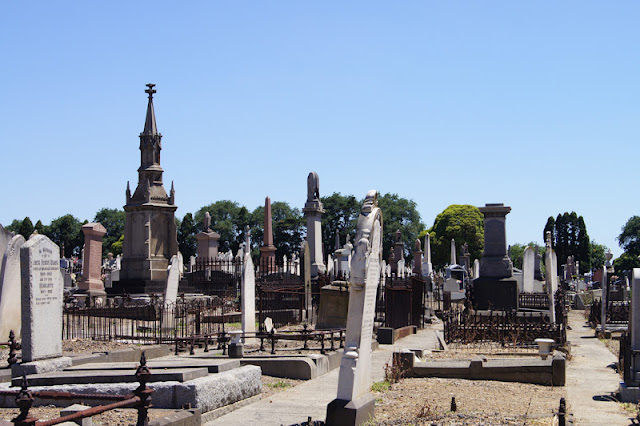When the Enterprize was ready to leave in August 1835, at the last moment creditors prevented Fawkner from joining the voyage. On board the Enterprize as it departed George Town, were Captain John Lancey, Master Mariner (Fawkner’s representative); George Evans, builder; William Jackson and Robert Marr, carpenters; Evan Evans, servant to George Evans; and Fawkner’s servants, Charles Wyse, ploughman, Thomas Morgan, general servant, James Gilbert, blacksmith and his pregnant wife, Mary, under Captain Peter Hunter. On 15 August 1835, Enterprize entered the Yarra River. After being hauled upstream, she moored at the foot of the present day William Street. On 30 August 1835 the settlers disembarked to build their store and clear land to grow vegetables. The Fawkners arrived in the Port Phillip District, on Friday, 16 October 1835, on the second trip of the Enterprize. Fawkner's diary reads: 'Warped up to the Basin, landed 2 cows, 2 calves and the 2 horses.'
Fawkner was keen to secure his place in history. He opened Melbourne's first hotel on the corner of William St and Flinders Lane. He published the Melbourne Advertiser on 1 January 1838 which was the district's first newspaper. The Advertiser's first nine or ten weekly editions were handwritten in ink. An old wood press and some type were eventually obtained from Launceston and the first printed edition appeared on 5 March 1838. It was to last for a further 17 editions when it was closed down on 23 April 1838 for want of a newspaper license from Sydney. The Port Phillip Patriot and Melbourne Advertiser was commenced on 6 February 1839 by newly licensed John Pascoe Fawkner. It was published daily commencing on 15 May 1845.
 |
| John Fawkner and Mrs Eliza Fawkner in 1856 as painted by William Strutt |
In 1851 Fawkner was elected to the first Legislative Council of the Port Phillip District (Talbot electorate), and in 1856 he was elected to the first Parliament of the self-governing colony of Victoria, as MLC for Central Province, the seat he held until his death on 4 September 1869. In Melbourne as in Launceston, he made many enemies, before dying as the grand old man of the colony on 4 September 1869 in Smith Street, Collingwood at the age of 77. At his funeral over 200 carriages were present, and 15,000 persons were reported to have lined the streets on his burial day, 8 September 1869. He was buried at the Melbourne General Cemetery. He and Eliza did not have any children.
 |
| Melbourne General Cemetery is quite enormous... |
 |
| So it is good to have these handy guides around the place! |



Wonderful, fascinating history, Nick! That's just one of the things that I do so enjoy your posts -- a chance to learn more about the history of Australia/Melbourne! Terrific and wonderful captures, of course!! Hope your week is off to a great start!!
ReplyDeleteSylvia
What a wealth of information! Thank you for the extensive research you do for your posts! Fascinating!
ReplyDeleteGolly, so many John Fawkners married to too many Eliza Fawkners!! You say he was keen to cement his place in history, and yet he had no off-spring. Many a historical figure has discarded wives when similarly placed.
ReplyDeleteHe does come across as an austere fellow. His portrait resembles Rembrandt's Dutch burghers, and his tomb is very Presbyterian!!
That board that you feature in your final photograph, Nick, is very much like the image that I downloaded for Springvale Botannical Cemetery, which the office down there gave me bigger version of. However, it did not seem to help because there were very few markers in situ to guide ones' bearings.
Thanks for yet another contribution to Taphophile Tragics. I treasure you each time I read a post. Don't worry about being 'slack'. You aren't at all. And I do know about slack, and being pressed for time. Same goes for me over the last few weeks.
Interesting post and photos.
ReplyDeleteSuch an interesting post Nick. Congratulations on your research. You mention that John Pascoe made enemies before his death. I suppose that this is not unusual for a man of such position. I am intrigued though. I wonder who they were. Another story for another day.
ReplyDeleteYou did a lot of research, thanks for sharing this wonderful story and the pictures of the people.
ReplyDeleteFantastic post. It looks like a very interesting cemeter to visit.
ReplyDeleteBrilliant photos.
Herding Cats
Glad they have a guide. It looks like a huge cemetery! Must be an interesting place to visit.
ReplyDeleteSo THAT's how Melbourne started!
ReplyDeleteHe looks like H.C.Andersen....
ReplyDeleteFawkner's tomb looks so much like a slice of a chapel, protecting! Intriguing post on another perspective of Melbourne's history!
ReplyDeletein one of the pics the cemetery looks quite bare, with just the stones and the gates but not much grass!
ReplyDelete15000 people at your funeral... puuh...!
Oh, I wish our cemetery had such a guide.
ReplyDeleteI imagine it is not unusual to have many enemies if your goal is to mark your name in history.